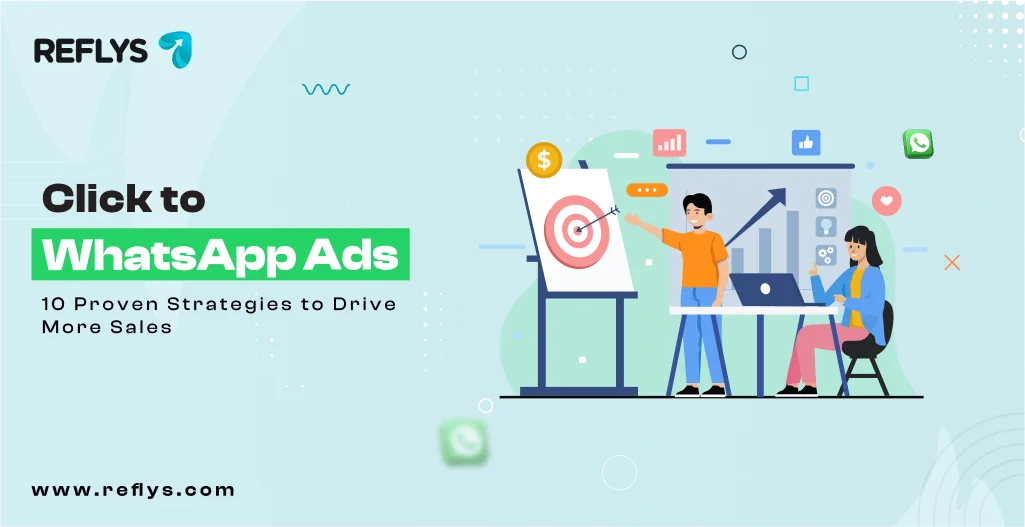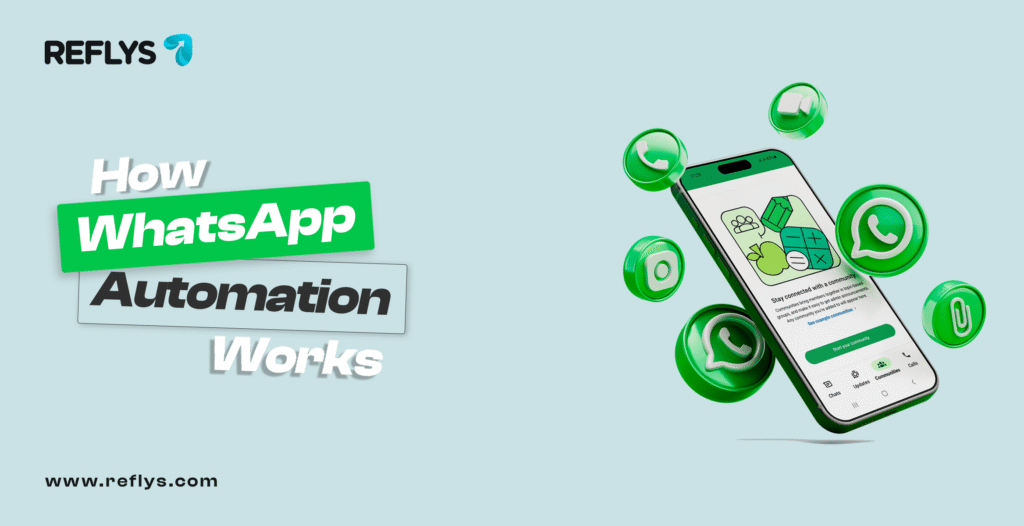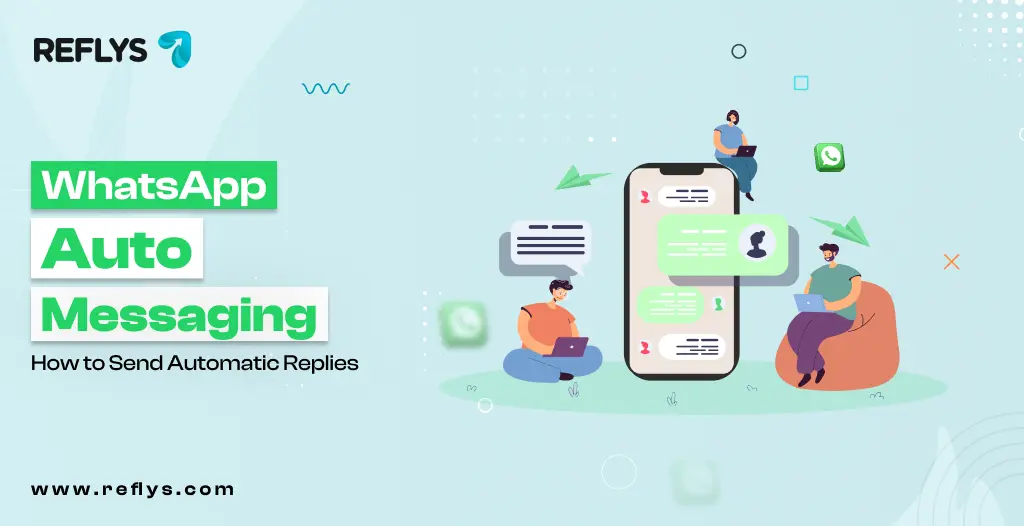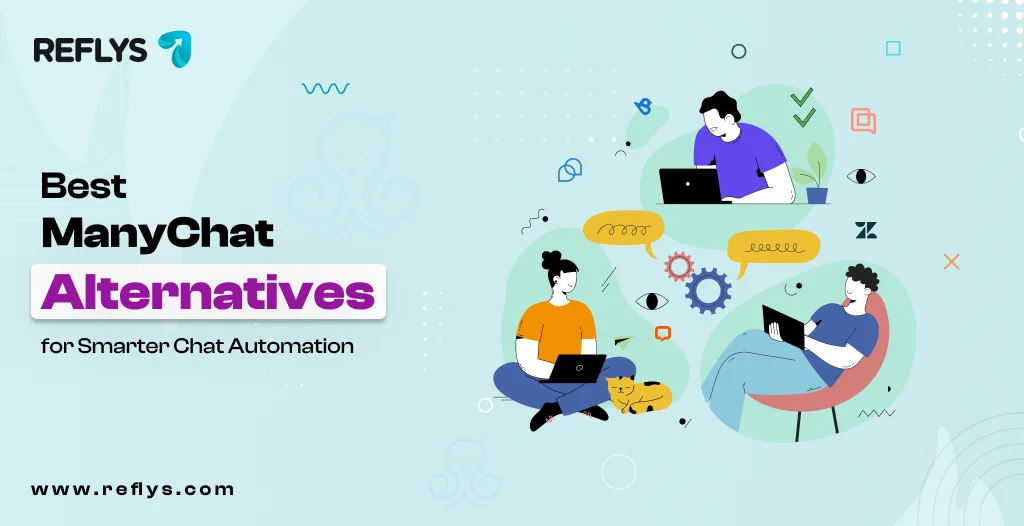What Are Broadcast Messages in WhatsApp? A Complete Guide
WhatsApp no longer serves the single purpose of chatting with friends. Over the years, it has evolved into a powerful marketing tool for families, communities, and even businesses. One of the features that often leaves people curious is the broadcast message.
If you have ever seen the broadcast list feature in WhatsApp and ever wondered what it is, then you are not alone. Many people confuse it with ‘WhatsApp group chats’ while businesses see it as an easily accessible shortcut in the marketing funnel.
This complete guide explains broadcast messages in simple words. We’ll look at what they are, how they work, how they differ from groups and channels, the benefits, best practices, and even real message templates you can use today. By the end, you’ll know exactly how to make the most of this feature.

What Is a WhatsApp Broadcast Message?
A broadcast message in WhatsApp is a message that you send to many people at the same time. But unlike a group chat, the recipients get it as a personal message in their own chat window.
Now imagine you are the owner of a clothing store. You want to announce a weekend sale. Instead of typing and sending the same message to 50 customers one by one, you create a broadcast list. Each customer receives your message as if it were sent only to them.
There’s one important rule: only people who have saved your number in their contacts will get your broadcast. This is WhatsApp’s way of keeping spam under control.
Thus, WhatsApp broadcast allows you to send one message to many people, privately and efficiently.
Broadcast List vs Groups vs Channels
WhatsApp users often mix up broadcasts with groups or channels. However, all three serve different purposes. Let’s discuss how:
1. Broadcast List (1 → Many)
- It is ideal for announcements.
- Recipients remain unaware of the number of users and the messages sent.
- Replies are private, sent only to you.
2. Group Chat (Many ↔ Many)
- Users can contact, answer, and view each other’s answers easily.
- Ideal for online meetings, collaboration, or friends and family conversations.
3. Channel (1 → Many, but public)
- An updated feature where admins can share post updates.
- Users can view the information but can’t respond directly.
When should you use each?
- Choose a broadcast in WhatsApp if you want to deliver information, marketing content, or notifications without the need for a group conversation.
- Choose a group if you want active discussions.
- Use a channel if you want to grow an audience that only follows your updates.
Benefits of Using Broadcast Messages
These are the major benefits of using WhatsApp broadcast messages
1. Time Saver
Instead of copying and pasting the same message multiple times, you can send it once and ensure that it reaches everyone in your list.
2. Privacy
Recipients won’t know who else received the message. This makes broadcasts less intrusive than groups.
3. Professional Touch
Replies come privately, which feels more personal. Businesses often use this for order updates, promotions, and event reminders.
4. High Engagement
Compared to email, WhatsApp messages have much higher open rates. People are more likely to read a WhatsApp broadcast than an email newsletter.
5. Easy for Small Businesses
A broadcast list in WhatsApp is simple to set up and doesn’t require extra tools. It’s free to use inside the app.
Scaling Broadcasts: App vs API
If you’re just sending updates to a small group of people — say, under 200 contacts — the WhatsApp app itself is more than enough. But what happens when you want to reach thousands of customers at once?
That’s where the WhatsApp Business API comes in. It’s designed for bigger campaigns and comes with powerful features like:
- Sending approved message templates.
- Automating customer notifications.
- Tracking message delivery and read receipts.
The catch? The API isn’t free. It’s usually offered through providers and requires approval. It also comes with rules to prevent spam.
So here’s the rule of thumb:
- Use the app if you’re a small shop, freelancer, or community leader.
- Use the API if you’re a large business that needs automation at scale.
And remember, whether it’s the app or the API, blasting random numbers can get you blocked. Consent always comes first.
Best Practices for Broadcast Messages
The proper usage of broadcasts ensures you keep your contacts happy and engaged. Below are some basic rules:
1. Personalize Your Message
if you are Even sending the same announcement, try to tailor it to the individual. Use the person’s first name if you can.
2. Keep It Short
WhatsApp isn’t for essays. Write concise and actionable messages.
3. Have a Clear Call-to-Action (CTA)
Information is not shared for the sake of sharing. Show people the way. For example, “Click here to order” or “Text back YES to confirm.”
4. Respect Frequency
One to two broadcasts a week is enough for the majority of businesses. Overcommunicating is the quickest way to lose someone’s interest.
5. Schedule and Duration
Your broadcasts should not be sent late at night or first thing in the morning. Be considerate of people’s schedules and time zones.
6. Follow Consent Rules
Your contacts should consent to receive messages, and it should be easy to unsubscribe, in the form of replying “STOP.”
10 Ready-to-Use Broadcast Message Templates
Need inspiration? Here are some templates you can use to streamline your next broadcast:
1. Promo Alert
“Hi [Name], note that our weekend sale is live with 20% off! Contact us now to grab your offer.”
2. Cart Reminder
“You left something in your cart, [Name]. Complete your purchase and get free shipping. “It only applies if you purchase the product within the next 24 hours!1’
3. Appointment Reminder
Hello [Name], just a reminder: This is a reminder to attend the appointment you have scheduled tomorrow at 3 PM. Kindly reply to this message ‘CONFIRM’ to have a seat.
4. Event Invite
“Your invitations have been received! Join this Saturday and enjoy our grand opening. Tap here to RSVP.”
5. Order Update
“Get ready! [Name]! Your order is on the way. Delivery is expected to be tomorrow.”
6. Feedback Request
“We’d love to hear your thoughts! What thoughts come to mind to summarize your experience with us?”
7. New Product Launch
“Exciting news, [Name]! A collection of new products has been released. Take a peek [link].”
8. Holiday Greeting
“Happy Eid. To you and your closest relatives, I pray for endless harmony and eternal happiness.”
9. VIP Exclusive
“Hi [Name], you’re one of our VIPs. Get early access to our special sale today.”
10. Service Update
“Hello [Name], our working hours have been updated! Our new timings are 9 AM – 6 PM. Feel free to ask any questions.”
Frequently Asked Questions
Q: Why didn’t some of my contacts get the broadcast?
A: Because they haven’t saved your number in their phone. WhatsApp only delivers broadcasts to saved contacts
Q: Can recipients see each other?
A: No. Each person gets your broadcast as a private message.
Q: Does it cost money?
A: No, broadcasts in the app are free. Using the API for business campaigns may have costs.
Q: What’s the difference between a broadcast list on WhatsApp and a group?
A: A broadcast sends one-way individual messages, while groups enable many-to-many conversations.
Final Thoughts
Broadcast messages in WhatsApp are a simple but powerful tool. With broadcasting, users can send updates to numerous people at the while still maintaining a personal touch.
To families, it’s an effective method to share updates. To companies, it serves as a freely available channel for marketing, allowing for more user interaction as compared to Emails or SMS.
The key is to use broadcasts responsibly: keep your messages short, observe the time of sending, and preferably gain the consent of the users.
See the tips and tricks, drag and drop the templates, and you’ll be amazed at how easily updates, reminders, and promotions can be disseminated with minimal effort, while preserving the heart of the conversation.
See the tips and tricks, drag and drop the templates, and you’ll be amazed at how easily updates, reminders, and promotions can be shared with minimal effort — all while keeping the conversation personal.


